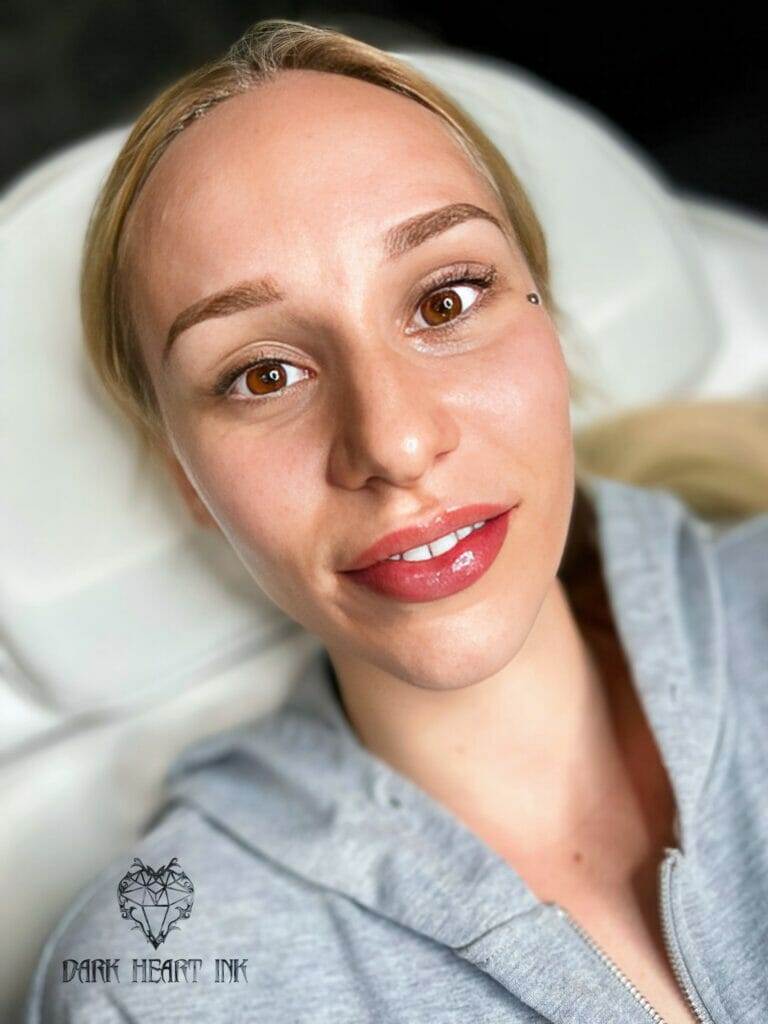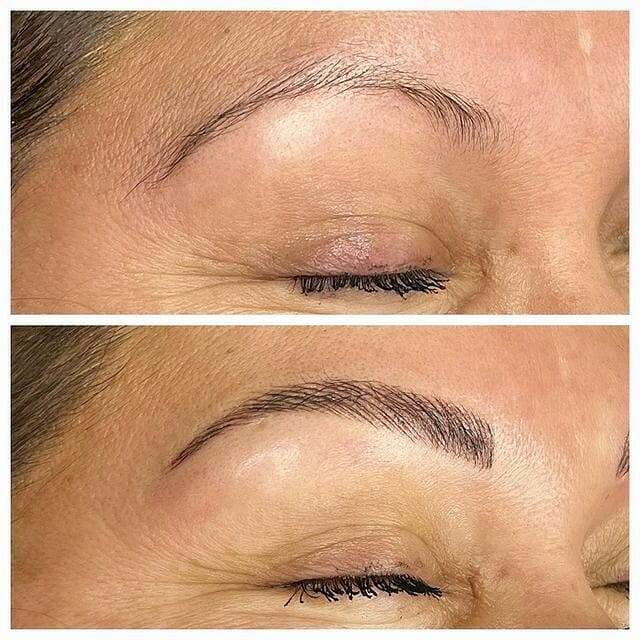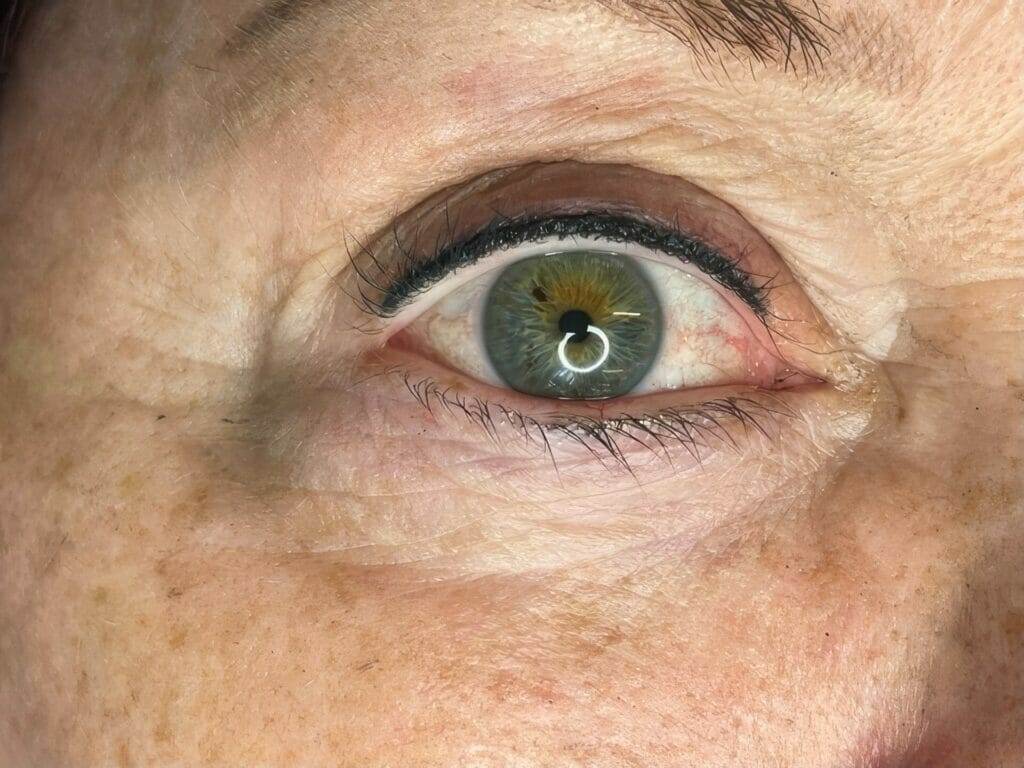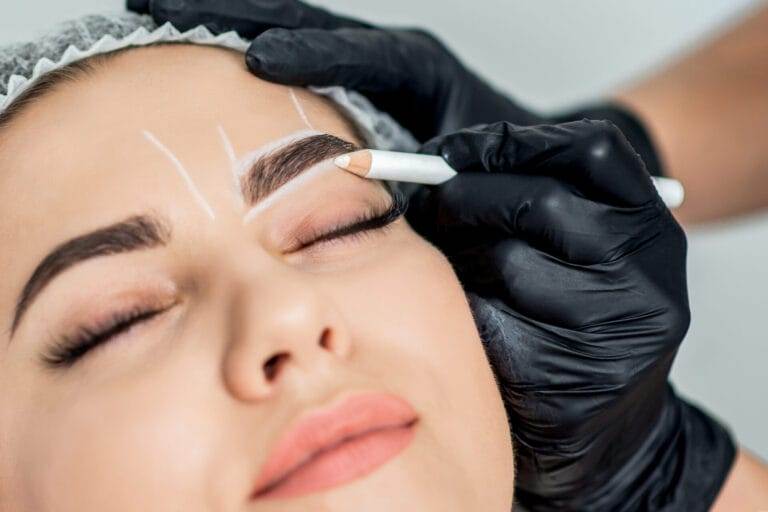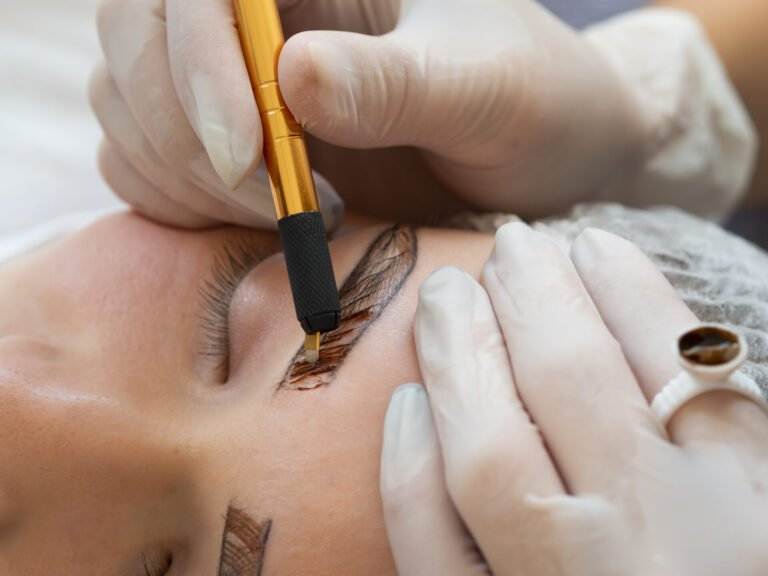Corrective cosmetic tattooing is a procedure that involves using tattooing techniques to correct and enhance the appearance of previous cosmetic tattoos. It is a specialized field that requires skill and expertise to achieve natural-looking results. Choosing a skilled artist for the procedure is crucial to ensure that the desired corrections are made effectively and safely.
Key Takeaways
- Corrective cosmetic tattooing can fix issues with previous cosmetic tattoos and enhance natural features.
- Common issues with previous cosmetic tattoos include fading, discoloration, and uneven lines.
- Techniques used in corrective cosmetic tattooing include microblading, shading, and scar camouflage.
- Color correction is important in achieving natural-looking results and involves balancing pigment.
- Choosing the right tattoo artist is crucial for achieving the desired results and avoiding further issues.
Common Issues with Previous Cosmetic Tattoos
Many people who have had previous cosmetic tattoos may experience issues such as fading, discoloration, and uneven lines. Fading occurs over time as the pigments used in the tattoo break down and are absorbed by the body. Discoloration can occur if the wrong pigment was used or if the tattoo was not properly cared for. Uneven lines can be a result of an inexperienced artist or improper technique.
These issues can occur for a variety of reasons. In some cases, the artist may not have used high-quality pigments or may not have applied them correctly. In other cases, the client may not have followed proper aftercare instructions, leading to complications. It is important to understand why these issues occur in order to address them effectively during the corrective tattooing process.
Techniques Used in Corrective Cosmetic Tattooing
There are several techniques that can be used in corrective cosmetic tattooing, including microblading and shading. Microblading is a technique that involves using a small handheld tool to create fine, hair-like strokes in the skin. This technique is often used to correct and enhance the appearance of eyebrows.
Shading is another technique that can be used to correct previous cosmetic tattoos. This technique involves using a tattoo machine to create soft, shaded areas in the skin. It can be used to add depth and dimension to areas that may have faded or become discolored over time.
These techniques can help to correct previous issues by adding pigment where it is needed and creating a more balanced and natural-looking result.
Color Correction: The Art of Balancing Pigment
| Metrics | Values |
|---|---|
| Number of pigments balanced | 10 |
| Time taken for color correction | 2 hours |
| Number of color swatches used | 20 |
| Number of color correction layers applied | 5 |
| Final color accuracy | 95% |
Color correction is an important aspect of corrective cosmetic tattooing. It involves using the right pigments to balance and correct the color of the previous tattoo. This can be a complex process that requires skill and expertise.
The artist must carefully analyze the existing pigment and determine the best course of action to achieve the desired result. This may involve adding new pigment to balance out any discoloration or fading, or it may involve removing some of the existing pigment to create a more even and natural-looking result.
Choosing the right pigment for each individual is crucial to achieving a successful color correction. The artist must take into account factors such as skin tone, undertones, and personal preferences to ensure that the final result is harmonious and flattering.
The Importance of Choosing the Right Tattoo Artist
Choosing a skilled artist for corrective cosmetic tattooing is crucial to achieving the desired results. This is because corrective tattooing requires a high level of skill and expertise to address previous issues effectively.
A skilled artist will have a deep understanding of color theory, skin anatomy, and tattooing techniques. They will also have experience working with a variety of skin types and tones, allowing them to create customized solutions for each individual.
When choosing a tattoo artist for corrective cosmetic tattooing, it is important to do thorough research and ask for recommendations. Look for artists who specialize in corrective work and have a portfolio of successful before and after photos. It is also important to schedule a consultation with the artist to discuss your specific concerns and desired results.

Embellish PB: A Leading Provider of Corrective Cosmetic Tattooing in San Diego

Embellish PB is a leading provider of corrective cosmetic tattooing in San Diego. They specialize in correcting and enhancing previous cosmetic tattoos, helping clients achieve natural-looking results.
The artists at Embellish PB are highly skilled and experienced in corrective tattooing techniques. They have a deep understanding of color theory and skin anatomy, allowing them to create customized solutions for each individual. They also use high-quality pigments and state-of-the-art equipment to ensure the best possible results.
Embellish PB is known for their attention to detail and commitment to client satisfaction. They take the time to listen to each client’s concerns and desired results, and work closely with them throughout the process to ensure that their expectations are met.
The Consultation Process: What to Expect
During a consultation with Embellish PB, clients can expect a thorough assessment of their previous cosmetic tattoo and a discussion of their desired results. The artist will examine the existing pigment, analyze any issues or concerns, and develop a customized plan for correction.
The consultation is an important step in the process as it allows the artist to understand the client’s goals and expectations. It also gives the client an opportunity to ask questions and address any concerns they may have.
The Tattoo Removal Process: Options and Considerations
In some cases, tattoo removal may be necessary before corrective cosmetic tattooing can be performed. This is especially true if the previous tattoo is very dark or has significant discoloration.
There are several options for tattoo removal, including laser removal, dermabrasion, and surgical excision. Each option has its own considerations and potential risks, so it is important to consult with a professional before making a decision.
Fading Techniques: Preparing for a Cover-Up Tattoo
In some cases, fading techniques may be used to prepare the skin for a cover-up tattoo. These techniques involve using laser removal or other methods to lighten the existing tattoo so that it can be effectively covered with new pigment.
Fading techniques can help to create a more even canvas for the new tattoo and ensure that the final result is natural-looking and balanced.
Achieving Beautiful, Natural-Looking Results with Corrective Cosmetic Tattooing
Corrective cosmetic tattooing is a specialized field that requires skill and expertise to achieve natural-looking results. By choosing a skilled artist and discussing your concerns and desired results during a consultation, you can ensure that the corrections are made effectively and safely.
Embellish PB is a leading provider of corrective cosmetic tattooing in San Diego, known for their attention to detail and commitment to client satisfaction. They specialize in correcting and enhancing previous cosmetic tattoos, helping clients achieve beautiful, natural-looking results.
Whether you are looking to correct fading, discoloration, or uneven lines, corrective cosmetic tattooing can help you achieve the desired result. With the right artist and techniques, you can enhance your natural beauty and feel confident in your appearance.
If you’re interested in corrective cosmetic tattooing, you may also want to check out this insightful article on the process of tattoo removal or fading. It provides an in-depth look at the techniques used for correcting previous cosmetic tattoo work, as well as color correction. This article from Embellish PB in San Diego discusses the innovative Tatt2Away tattoo removal method, which offers an alternative to laser removal. Discover how this non-laser technique can help you get rid of old tattoos and create a fresh canvas for new artwork. Read more here.
FAQs
What is corrective cosmetic tattooing?
Corrective cosmetic tattooing is a technique used to correct previous cosmetic tattoo work that has gone wrong. It involves using specialized techniques to correct the shape, color, and symmetry of the previous tattoo.
What are the techniques used in corrective cosmetic tattooing?
The techniques used in corrective cosmetic tattooing include color correction, tattoo removal or fading, and the use of specialized needles and pigments to correct the shape and symmetry of the previous tattoo.
What is color correction in corrective cosmetic tattooing?
Color correction is a technique used to correct the color of a previous tattoo that has faded or changed over time. It involves using specialized pigments to match the color of the surrounding skin and create a more natural-looking result.
What is tattoo removal or fading in corrective cosmetic tattooing?
Tattoo removal or fading is a technique used to remove or fade a previous tattoo that is no longer desired. It involves using specialized lasers or chemical solutions to break down the ink particles in the skin and gradually fade the tattoo over time.
What is the process of tattoo removal or fading?
The process of tattoo removal or fading involves multiple sessions of laser or chemical treatments spaced several weeks apart. The number of sessions required depends on the size, color, and location of the tattoo, as well as the individual’s skin type and overall health.
Is corrective cosmetic tattooing safe?
Corrective cosmetic tattooing is generally safe when performed by a trained and experienced professional using sterile equipment and techniques. However, there is always a risk of infection, allergic reaction, or other complications, so it is important to choose a reputable and qualified practitioner and follow all aftercare instructions carefully.

